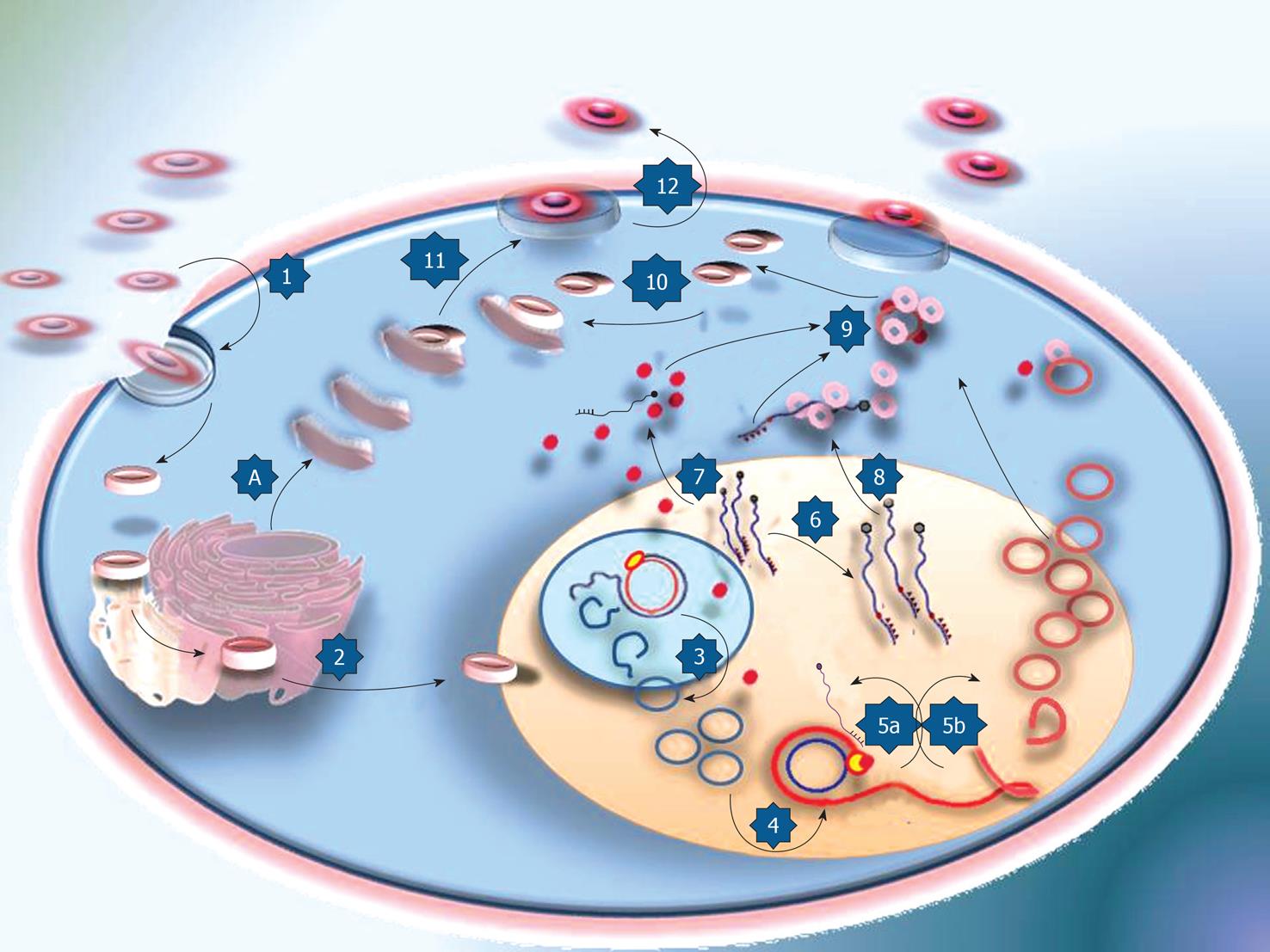Copyright
©2012 Baishideng.
Figure 1 Hepatitis D virus life cycle in hepatocytes in the presence of hepatitis B virus.
Schematic summary of the current concept of hepatitis D virus (HDV) replication cycle. The entry of HDV particles into hepatocytes is mediated by the attachment of hepatitis B virus (HBV) surface antigens coating HDV nucleoprotein to the host cell receptors, followed by endocytosis and uncoating of the virions (1). HDV nucleoprotein complex is leaded to the nucleus by accompanying S-HDAg, then the complex arrives to the nucleolus where RNA Pol I exists (2). Multimeric full-length antigenomic RNAs (AG-RNAs) are transcribed from HDV genomic RNA, likely by RNA Pol I. Circular AG-RNA molecules which are created by ribozyme activities of AG-RNA itself move to the nucleoplasm (3). AG-Strands serve as templates for RNA Pol II (4). RNA Pol II starts generating mRNA from genomic strands (5a) and full-length transcripts from AG-strands (5b). 6: Due to RNA editing at position 1012 of S-HDAg exerted by double-stranded RNA-specific adenosine deaminase, the open reading frame of these mRNA molecules extends for additional 19 amino acids, which lead to the production of Large delta antigen (6). mRNA molecules coding for small and large delta antigens move to the cytoplasm and are translated to relevant proteins (7,8). Small delta antigens activate genomic RNA replication (7), while large proteins promote virion assembly (8). Viral proteins form nucleoprotein complexes with HDV genomic RNAs (9). L-HDAg in HDV ribonucleoprotein complex interacts with existing HBV surface proteins in the cell (10). After HDV encapsidation by HBV surface proteins (11), complete virions leave the cell through exocytosis (12). HBV surface proteins bud through the endoplasmic reticulum or golgi body membranes of the host cell (A).
- Citation: Dastgerdi ES, Herbers U, Tacke F. Molecular and clinical aspects of hepatitis D virus infections. World J Virol 2012; 1(3): 71-78
- URL: https://www.wjgnet.com/2220-3249/full/v1/i3/71.htm
- DOI: https://dx.doi.org/10.5501/wjv.v1.i3.71









